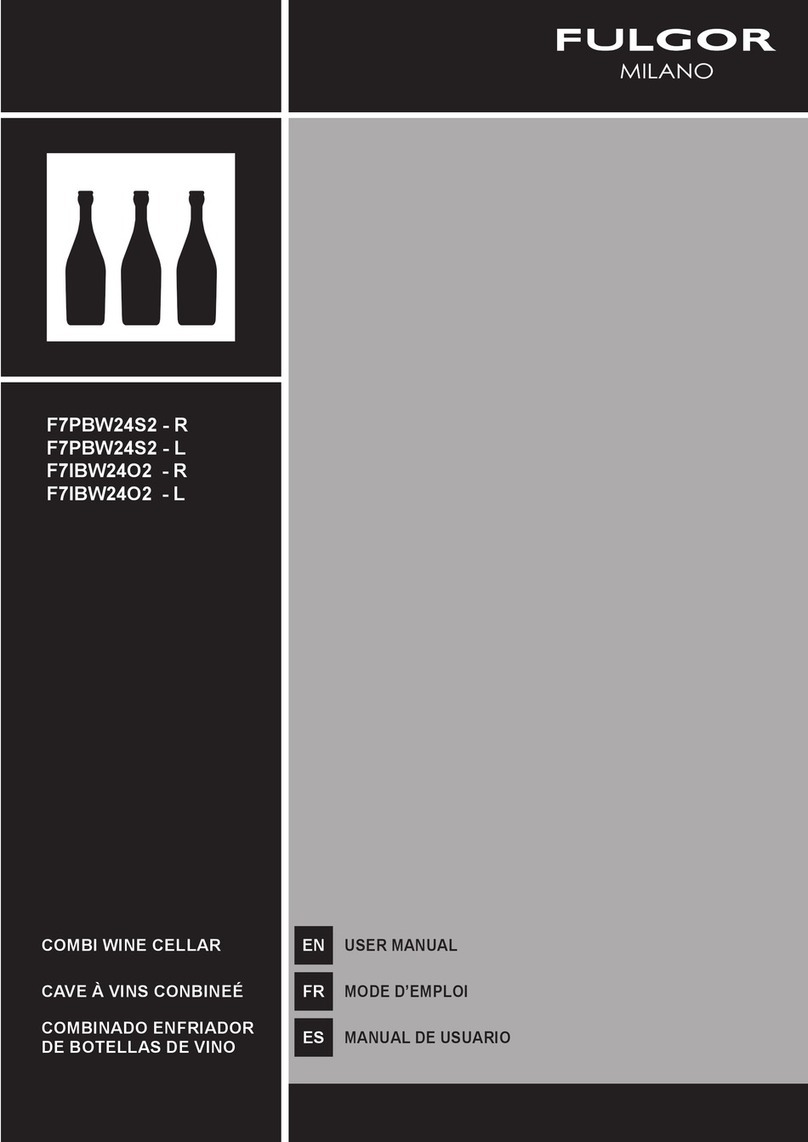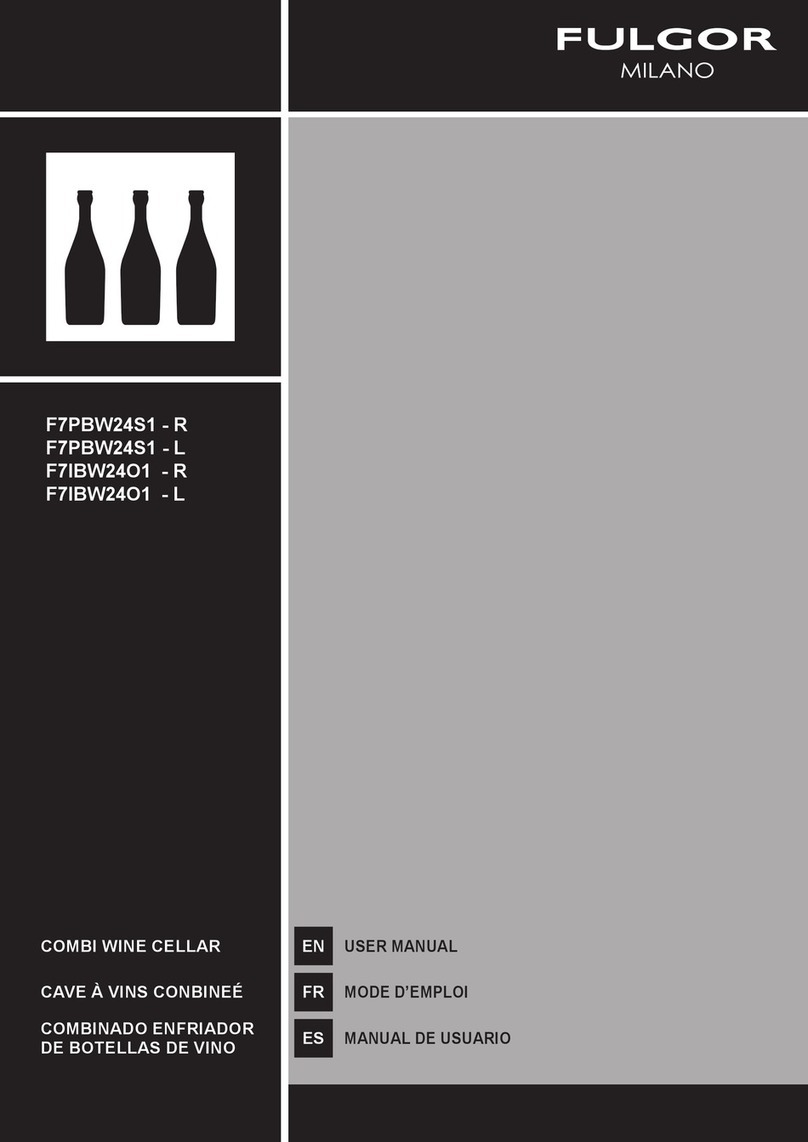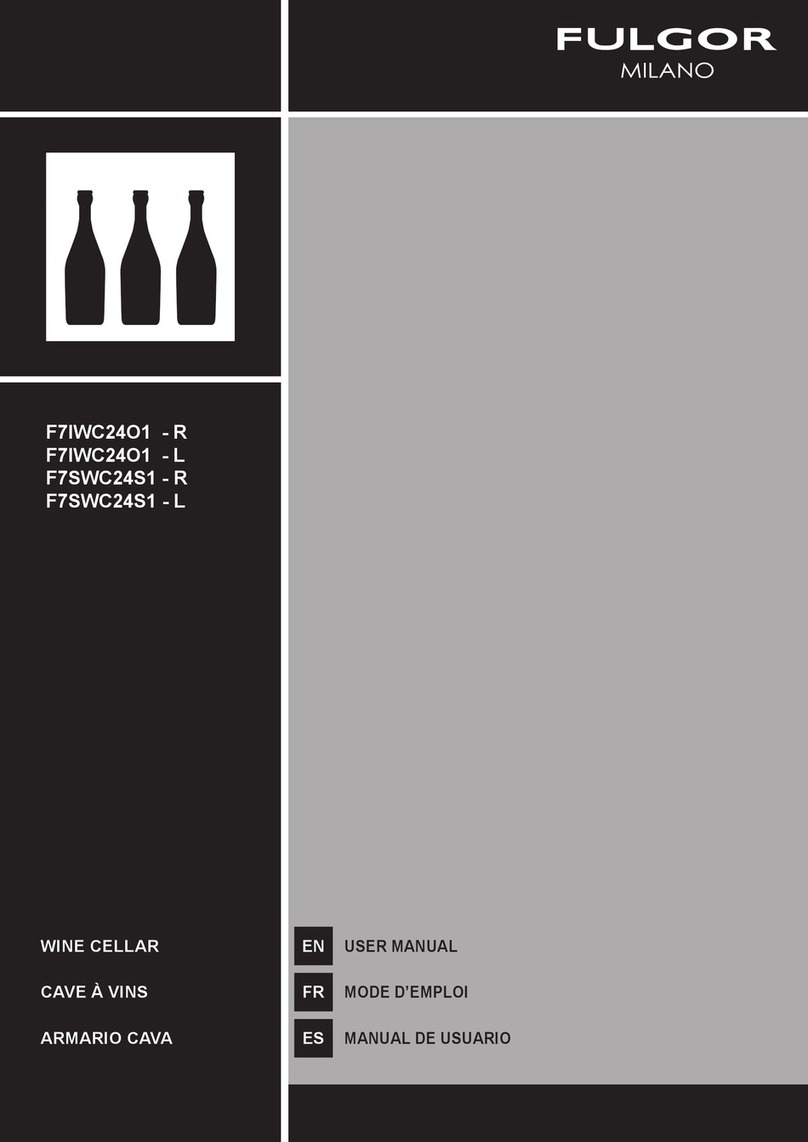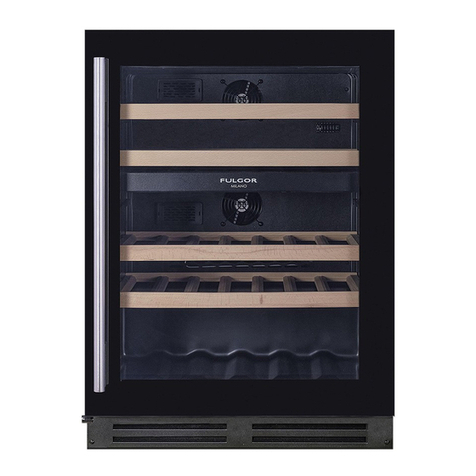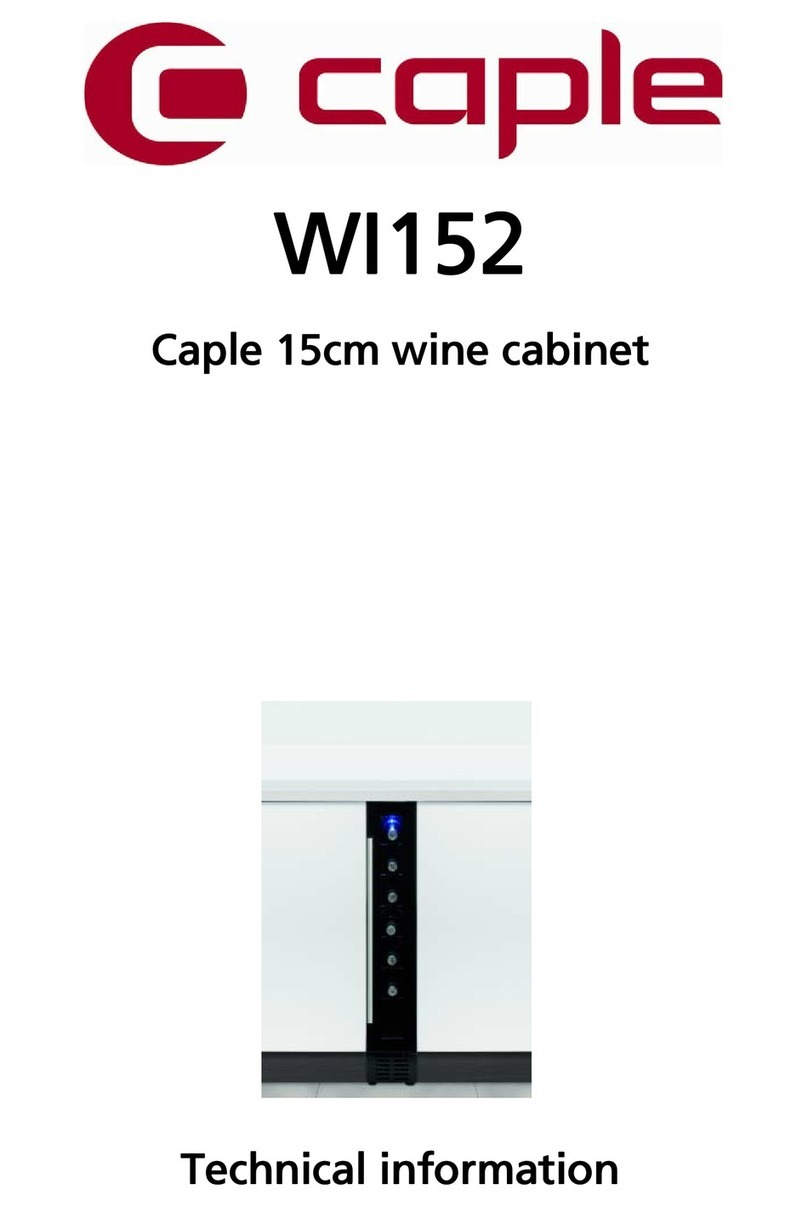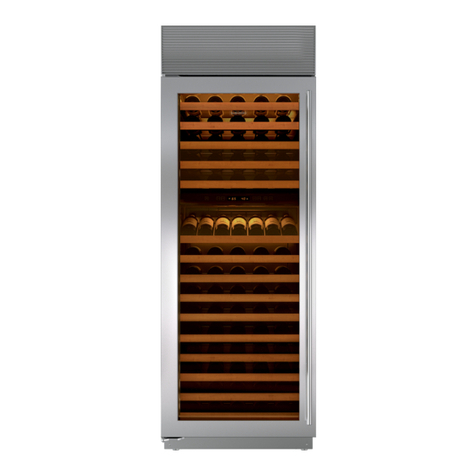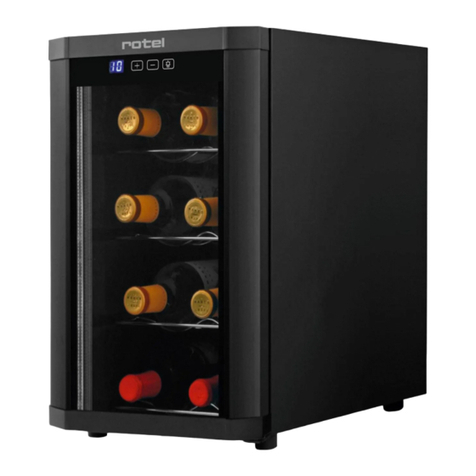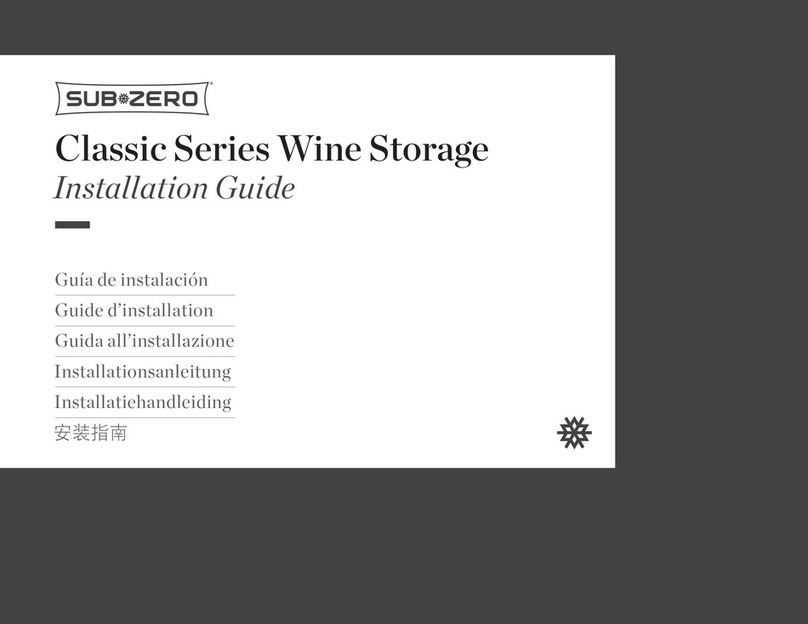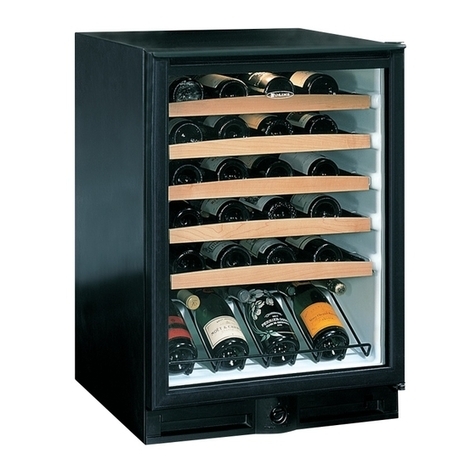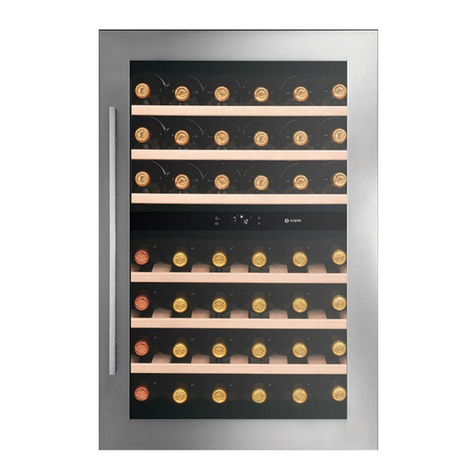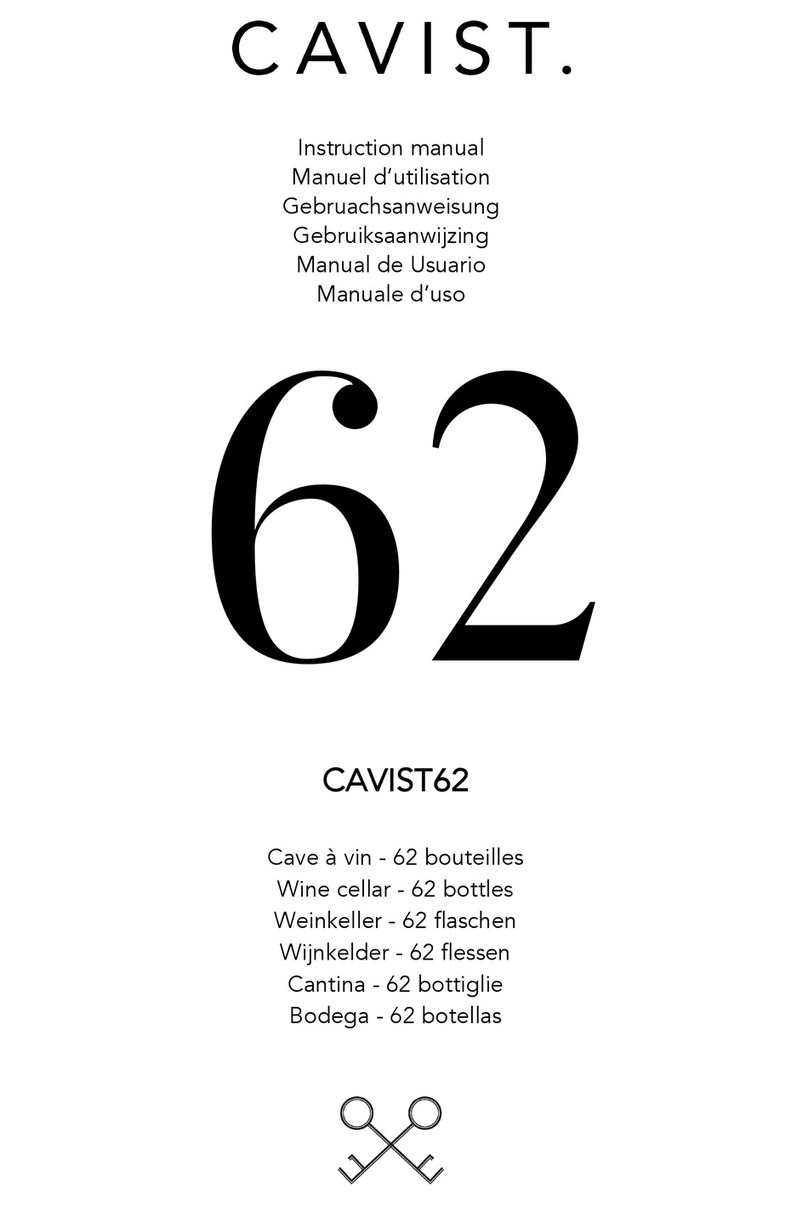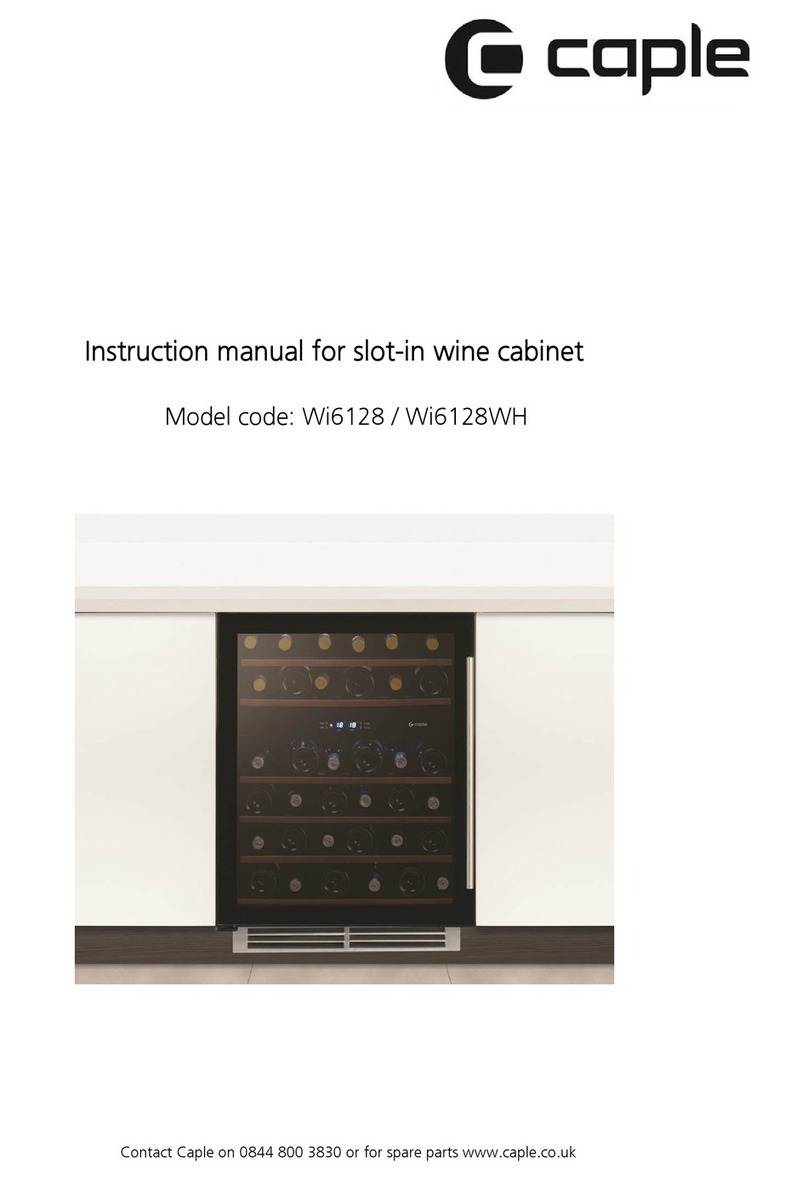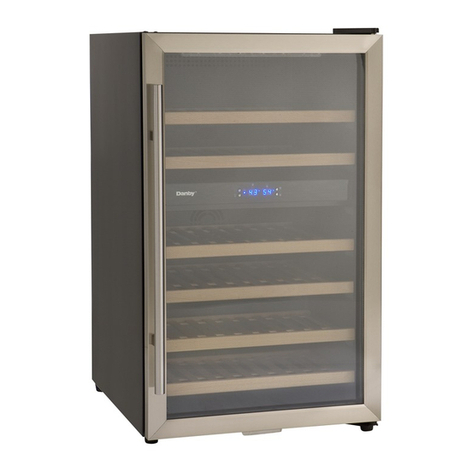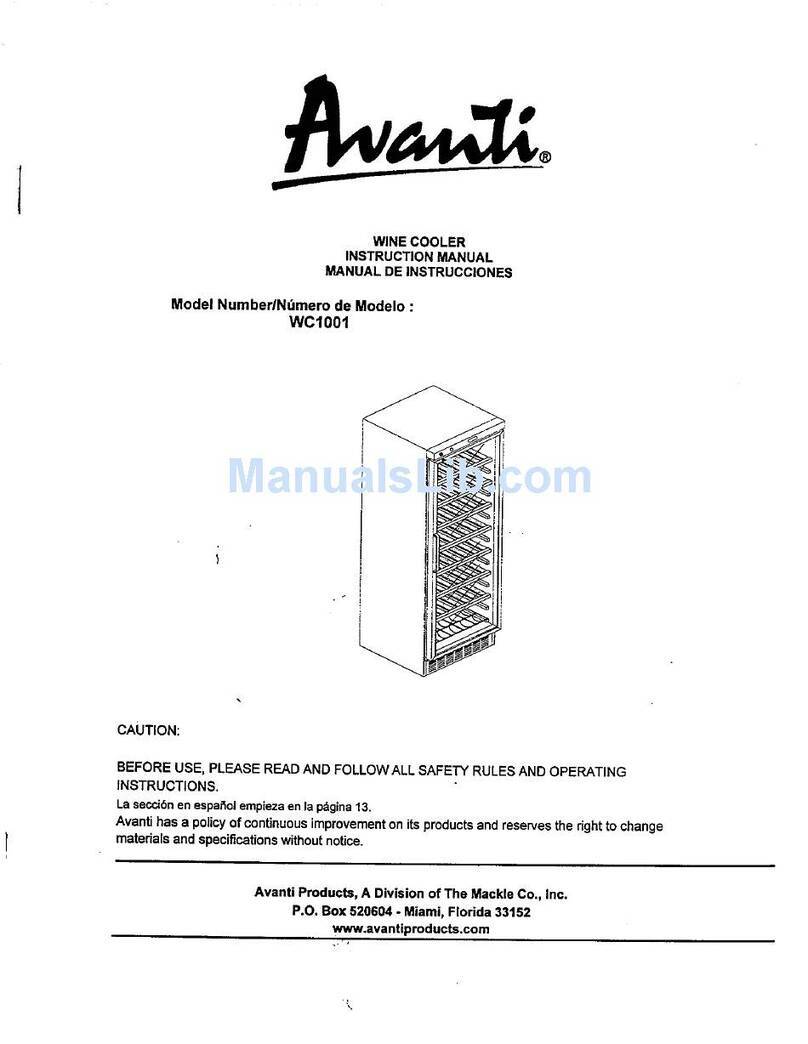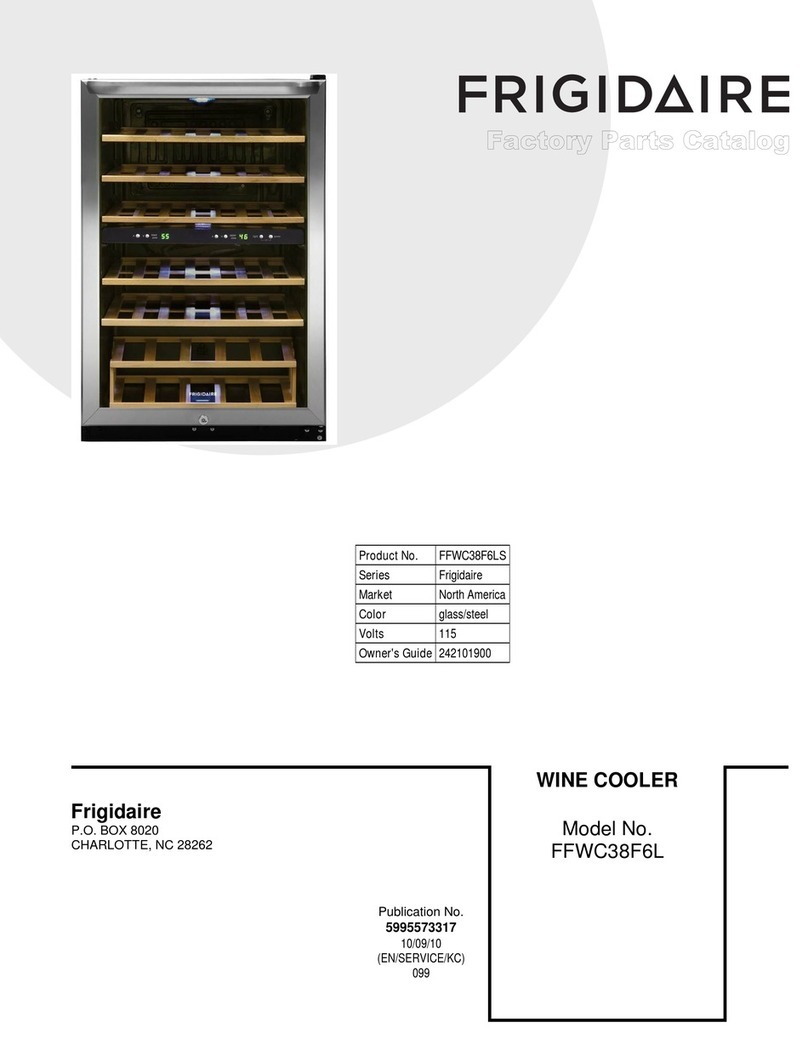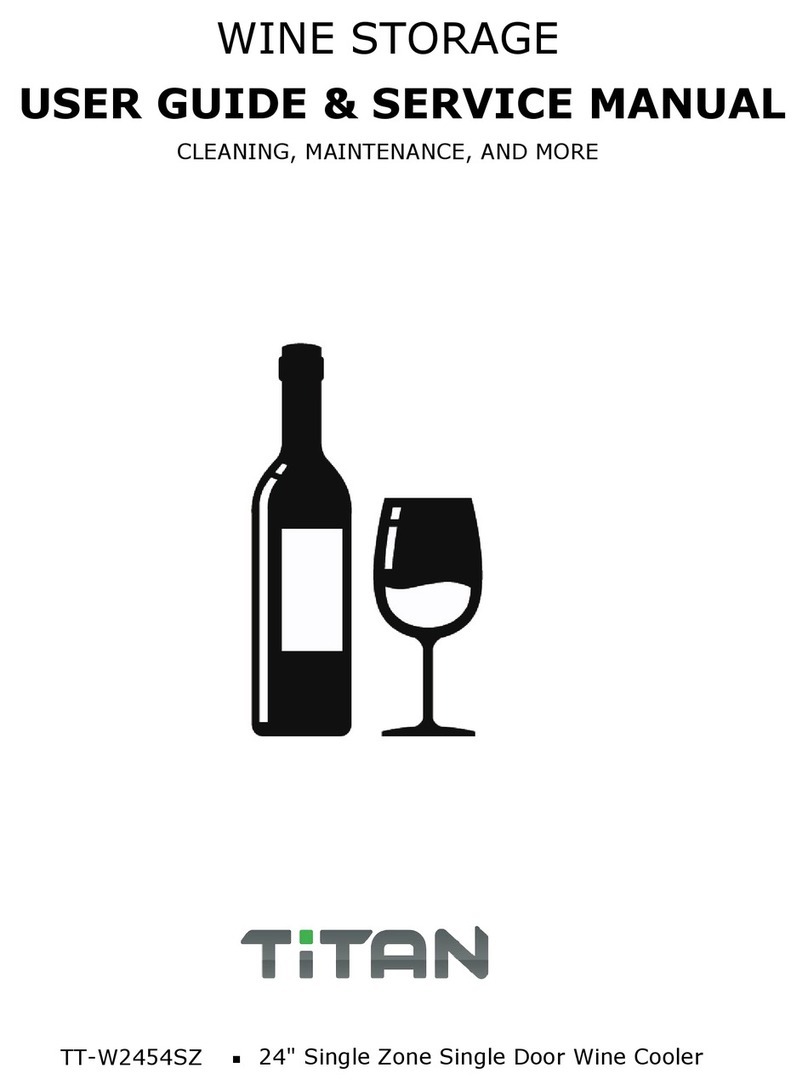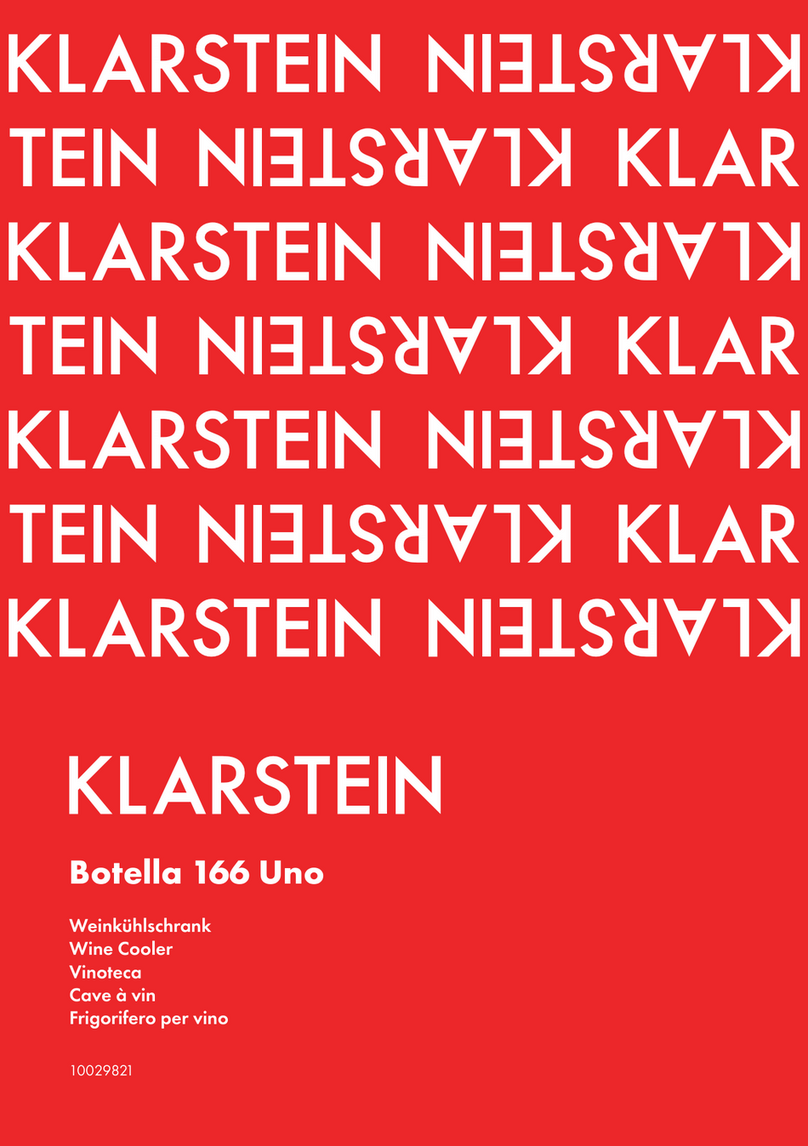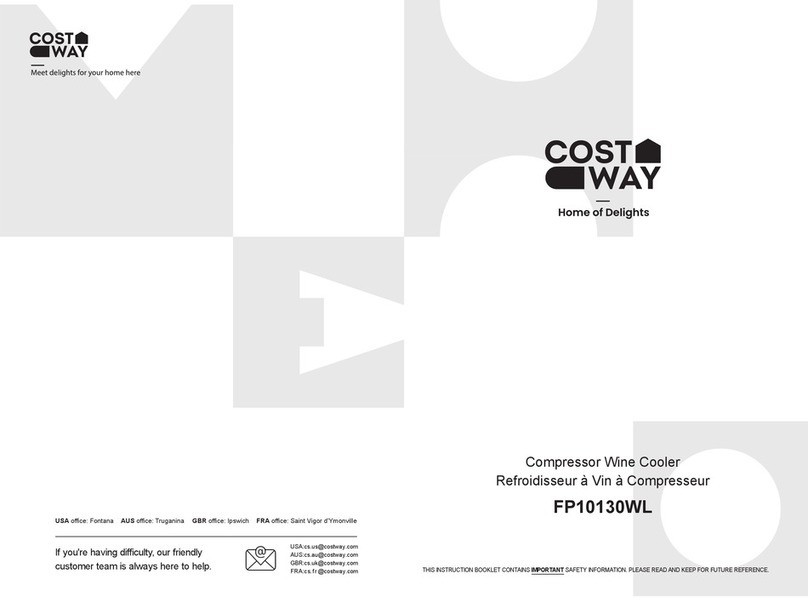
EN
10
4.1 Turning on and o
First start-up
When the appliance is connected to the electrical
power supply but has not yet been turned on, the
display shows the message
This is a safety message to warn that power is
supplied to the appliance, while all of the keys on
the panel are off.
To switch on all the appliance compartments,
press the Unit button for three seconds.
Turning off the Top Cellar compartment
Once you have turned on all of the compartments
of the appliance, you can turn off only the Top Cel-
lar compartment by pressing the relevant key for
three seconds.
The Fresh Zone compartment is always on and
cannot be turned off except by completely turn-
ing off the appliance.
Turning the Top Cellar compartment on again
Press again for three seconds the relevant key.
Complete shutdown
To shut down the unit completely for cleaning or
maintenance, press the Unit key for three sec-
onds.
Also take the plug out of the socket and turn off
the omnipolar switch that powers it.
Lengthy shutdown periods
After you have completely shut down the appli-
ance and unplugged it, empty it of all its contents,
clean it and dry it. Leave the doors and the draw-
ers ajar to prevent the formation of unpleasant
odours.
Note
To prevent accidental modification of set-
tings, the keypad locks automatically after a
certain period of time and the display shows
the message “keypad locked”. To re-activate
it, simultaneously press the keys Menu and
Up/Down (Down) for three seconds or Menu.
At the first start-up, if the message Standby
does not appear, it means that the appliance
has already started the cooling process. If this
is the case, deactivate any possible acoustic
signals by pressing the Alarm key , close
the door and wait until the set temperature is
reached.
During the first start-up, you will not be able
to use the Menu to modify factory settings un-
til the default temperature has been reached.
It is however possible to set the time and date
immediately; these parameters are required
to activate some of the special functions.
If only the Lower Cellar or Top Cellar compart-
ment is turned o, the corresponding fan will
continue to run independently to prevent the
formation of unpleasant odours and mould.
4.2 How to adjust the temperature
for suit various needs
To adjust the temperature in the various com-
partments, use the up/down key for that com-
partment (see chapter 3.5).
If the “keypad locked” message appear, simul-
taneously press the keys Menu and Up/Down
(Down) for 3 seconds or Menu .
Wines compartment
Each model has been carefully tested before
leaving the factory and is adjusted so as to en-
sure high performance and low consumption.
The ideal temperature for wine conservation does
however depend on the types of wine you want to
conserve, the method of conservation (Top Cel-
lar for conservation and consumption, or Lower
Cellar for the conservation and aging of prized
bottles).
It also varies according to personal taste.
Please refer to the guide on wine conservation
included further ahead in this manual.
As needed, you can reset the temperatures as
follows:
> Top Cellar Compartment:
from +4° C to +18° C (from 39° F to 64° F).
The default temperature is +12° C (53° F).
> Lower Cellar compartment:
from +4° C to +18° C (from 39° F to 64° F).
The default temperature is +10° C (50° F).
Fresh Zone compartment
The Fresh Zone compartment is default set to
freezer mode but it can also be set to run as a
refrigerator or cooler compartment.
Instructions for conversion are provided in the
paragraph on special functions and settings.
4. TURNING THE APPLIANCE ON AND OFF

